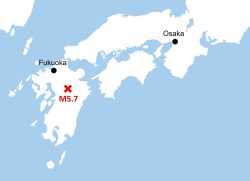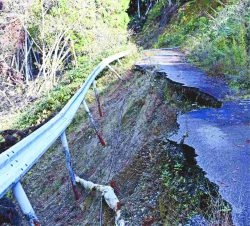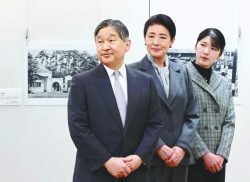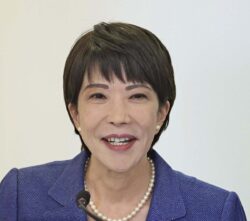
Solar panels are seen at a park in Tokyo.
16:58 JST, August 12, 2023
Power companies are straining to meet evening demand across the nation, due to a sharp decrease in solar power output following the setting of the sun.
Solar power generation is expected to increase in the future with the trend toward decarbonization. Presently, however, major power companies are calling on consumers to save energy whenever possible.
According to TEPCO Power Grid, Inc., some 13.97 million kilowatts of electricity were generated via solar power from 11 a.m. to noon on July 26 — when central Tokyo recorded its highest summer temperature of 37.7 C — representing 26% of total electricity generation. Output later began to fall, hitting zero sometime between 7 p.m. and 8 p.m.
Demand peaked at 53.55 million kilowatts from 2 p.m. to 3 p.m. on the day. Since many people were using air conditioners due to the blazing heat, demand only dipped by 10% to 20% in the evening. The company managed to meet demand by increasing the amount of electricity generated from pumped-storage hydroelectricity — in which water is pumped to a reservoir located on high ground then released back into a lower reservoir — and thermal power.
According to TEPCO Power Grid and others, demand had been increasingly peaking in the evening and into the night, when consumers collectively request large amounts of electricity for cooking and bathing. The company is requesting users cut back on electricity usage as far as possible, though stresses that ACs should continue to be used appropriately to prevent heat stroke.
Other major power companies are acting, too. Tohoku Electric Power Co. is implementing a campaign to award points to households and shops according to the amount of electricity they save between 4 p.m. and 8 p.m. on specific days in August and September.
“If demand can be reduced during the hours when wholesale prices for electricity increase in the transaction market, everybody will benefit,” a company spokesperson said.
Kansai Electric Power Co. and Kyushu Electric Power Co. also are running campaigns to encourage users to save electricity in the evening and at other times.
Solar power generation became widespread in the nation following the Great East Japan Earthquake in March, 2011. As interest in renewable energy sources grew, the government introduced a feed-in-tariff system and other initiatives to support the expansion of such energy sources.
As a result, in fiscal 2021, solar energy accounted for 8.3% of the country’s power generation.
The government has set a renewable energy source goal of 36% to 38% in fiscal 2030, with solar energy comprising 14% to 16% of the projected figures. With the increase in usage of solar energy — which is dependent on weather conditions — power companies are likely to continue to struggle to maintain a stable balance between supply and demand.
"Society" POPULAR ARTICLE
-

M4.9 Earthquake Hits Tokyo, Neighboring Prefectures
-

Israeli Tourists Refused Accommodation at Hotel in Japan’s Nagano Pref., Prompting Protest by Israeli Embassy and Probe by Prefecture
-

M7.5 Earthquake Hits Northern Japan; Tsunami Waves Observed in Hokkaido, Aomori and Iwate Prefectures
-

Tsukiji Market Urges Tourists to Avoid Visiting in Year-End
-

M5.7 Earthquake Hits Japan’s Kumamoto Pref., Measuring Upper 5 Intensity, No Tsunami Expected
JN ACCESS RANKING
-

Tokyo Economic Security Forum to Hold Inaugural Meeting Amid Tense Global Environment
-

Keidanren Chairman Yoshinobu Tsutsui Visits Kashiwazaki-Kariwa Nuclear Power Plant; Inspects New Emergency Safety System
-

Imports of Rare Earths from China Facing Delays, May Be Caused by Deterioration of Japan-China Relations
-

University of Tokyo Professor Discusses Japanese Economic Security in Interview Ahead of Forum
-

Japan Pulls out of Vietnam Nuclear Project, Complicating Hanoi’s Power Plans























